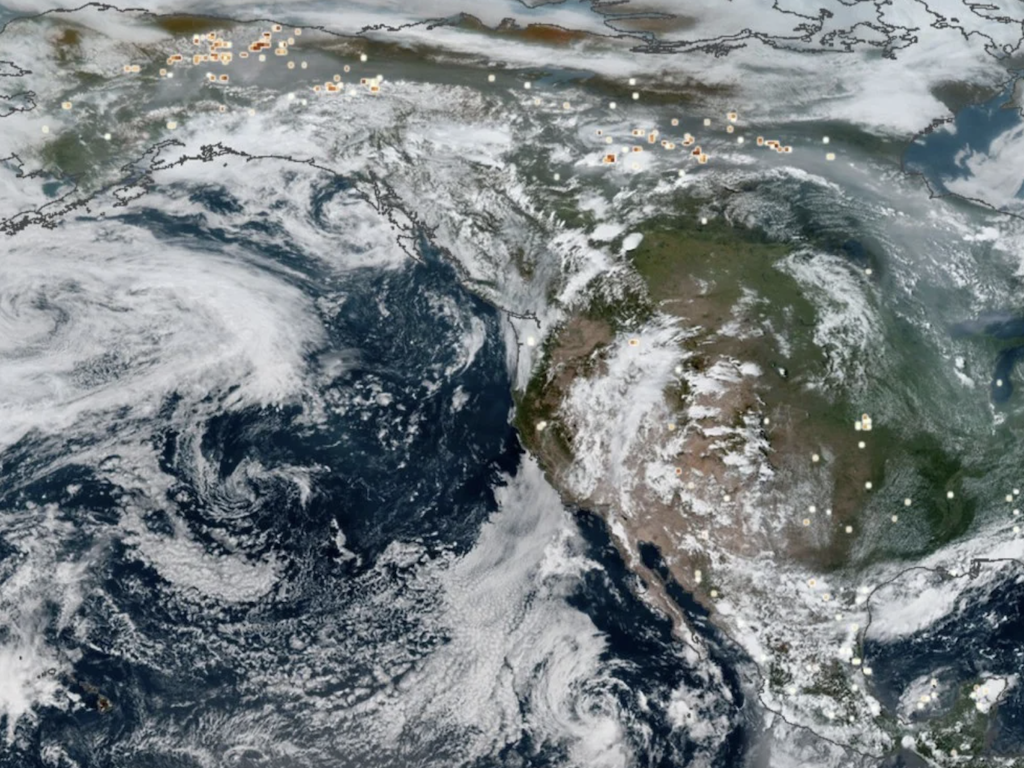4 Mins Read
By: Mark Kaufman
Some fires won’t die.
They survive underground during the winter and then reemerge the following spring, as documented in places like Alaska. They’re called “overwintering,” “holdover,” or “zombie” fires, and they may have now awoken in the Arctic Circle — a fast-warming region that experienced unprecedented fires in 2019. The European Union’s Copernicus Atmosphere Monitoring Service is now watching these fires, via satellite.
Zombie fires smolder underground for months, notably in dense peatlands (wetlands composed of ancient, decomposed plants), and then flare-up when it grows warmer and drier. “Zombie” is fitting.
“It really does describe what these fires do,” said Thomas Smith, an assistant professor in environmental geography at the London School of Economics. “They recover and they’re difficult to kill.”
In April, two snowmachine-riding fire technicians found a zombie fire still smoldering near Willow, Alaska. The fire started in August 2019.
This smoldering can quickly escalate to new blazes. “Zombie fires start burning as soon as the snow melts,” said Jessica McCarty, an Arctic fire researcher and assistant professor in the Department of Geography at Miami University.
These overwintering fires are most likely to emerge after big wildfire years with lots of burned land. They often light up on the edge of the previous year’s blazes. “It suggests a fire might have survived,” said Smith. Then, the fires can ignite dried-out vegetation.
Importantly, it’s difficult to say with certainty that the remote, early-season Arctic Circle fires identified by the European Union’s Copernicus Atmosphere Monitoring Service are all actually zombie fires. It’s possible people lit some or many of the blazes for agricultural purposes, or by accident. “It’s really difficult to say for sure,” noted Smith.
If they are truly zombie fires, that means 2019’s blazes may ignite robust 2020 fires this summer.
“If this is the case, then under certain environmental conditions, we may see a cumulative effect of last year’s fire season in the Arctic, which will feed into the upcoming season and could lead to large-scale and long-term fires across the same region once again,” Mark Parrington, a senior scientist and wildfire expert at the European Union’s Copernicus Atmosphere Monitoring Service, said in a statement.
Overall, fires in the Arctic Circle — which can release colossal amounts of heat-trapping carbon dioxide and methane into the atmosphere — have been normal this year, but they’re expected to pick up steam in June. What’s more, they’ll likely be enhanced by both Russia’s hottest winter on record and recent Siberian heat waves, where temperatures reached some 40 degrees Fahrenheit above average.
“We could have quite a lengthy fire season,” said Smith. Wildfires feast on dry vegetation, Smith emphasized, and there will likely be ample amounts of parched land this summer.
So what happens now?
In the future, fire researchers expect an uptick in zombie fires. That’s because the planet is relentlessly warming, particularly in the Arctic, which means more ready-to-burn vegetation. It’s already happening. “Arctic firesare becoming more common overall,” explained Miami University’s McCarty.
And some of these fires will inevitably smolder all winter, under the snow. “With a warmer Arctic, we’re more likely to see overwintering fires,” noted Smith.
We have no way of fighting them.
It’s challenging to stop zombie fires. They can happen in extremely remote places, without any roads or means of dousing them before they erupt. “We have no way of fighting them,” said McCarty. “They’re often fairly far-removed. How are we going to put them out?”
It’s a question of profound importance in the decades ahead. Preventing human-caused Arctic wildfires will be critical, emphasized McCarty. That’s because Arctic fires aren’t just burning trees, they’re often burning through peatlands, which release bounties of the heat-trapping greenhouse gas methane into the air. When it comes to trapping heat, methane is 25 times more potent than carbon dioxide over the course of a century.
It’s a vicious cycle. The warming Arctic produces more fires. More fires burn more forests and peatlands. This releases more methane and carbon dioxide into the air. This contributes to ever more planetary heating.
“Not stopping these zombie fires means further degrading these Arctic ecosystems,” said McCarty. “Further warming leads to more zombie fires. It’s not great.”

This story originally appeared in Mashable and is republished here as part of Covering Climate Now, a global journalistic collaboration to strengthen coverage of the climate story.
Lead image courtesy of.




